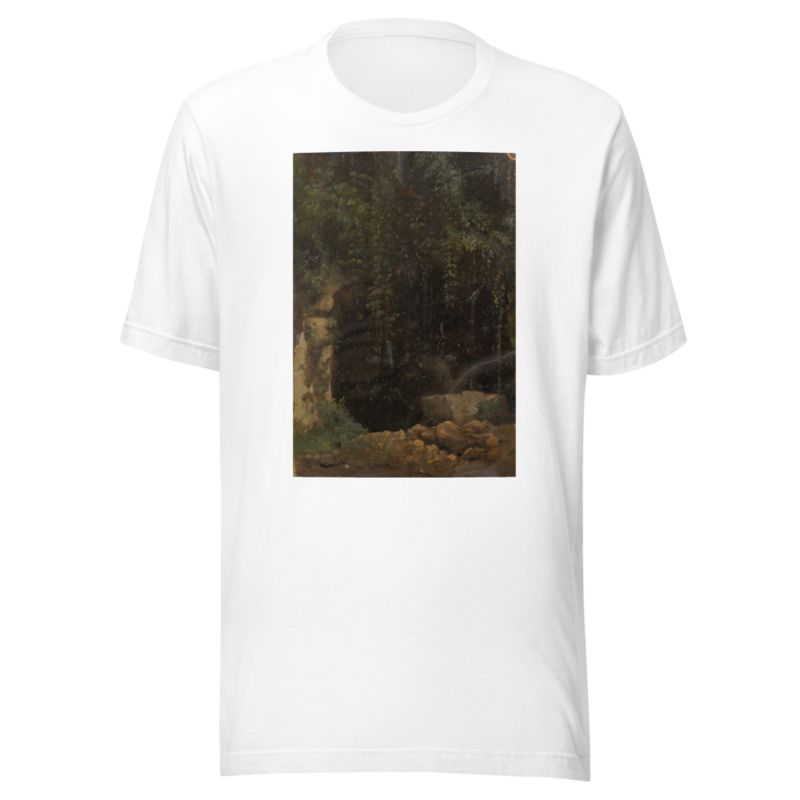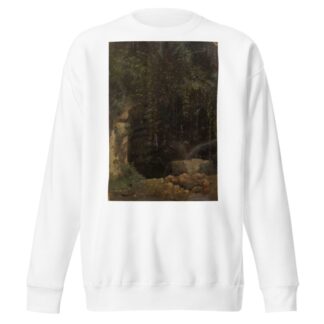Description
Hagen-Schwarz, Julie. Allikas by Julie Wilhelmine Hagen-Schwarz printed on a T-Shirt
About the T-Shirt
Regular fit
Standard length, the fabric easily gives into movement
Casual wear
A classic, everyday option loved by our customers
Side-seamed
Constructed by sewing two parts together, creating a fitted look
The Unisex Staple T-Shirt feels soft and light with just the right amount of stretch. It’s comfortable and flattering for all. We can’t compliment this shirt enough–it’s one of our crowd favorites, and it’s sure to be your next favorite too!
- Solid colors are 100% Airlume combed and ring-spun cotton
- Ash color is 99% combed and ring-spun cotton, 1% polyester
- Heather colors are 52% combed and ring-spun cotton, 48% polyester
- Athletic and Black Heather are 90% combed and ring-spun cotton, 10% polyester
- Heather Prism colors are 99% combed and ring-spun cotton, 1% polyester
- Fabric weight: 4.2 oz./yd.² (142 g/m²)
- Pre-shrunk fabric
- 30 singles
- Side-seamed construction
- Tear-away label
- Shoulder-to-shoulder taping
- Blank product sourced from Nicaragua, Mexico, Honduras, or the US
Julie Wilhelmine Hagen-Schwarz (1824 – 1902)
Julie Wilhelmine Hagen-Schwarz was a Baltic German painter, primarily of portraits.
She was the daughter of the painter August Matthias Hagen; born while her parents were on a painting excursion. She displayed an early interest in drawing, so her father wasted no time in giving her lessons. After graduating from the public schools, she enrolled at the University of Dorpat (now University of Tartu), where she was soon attracted to portrait painting.
After graduating, she received a grant to study in Germany. She began with Friedrich Gonne in Dresden, then went to Munich, obtaining a position in the workshops of Moritz Rugendas. Three years later, she returned to Tartu and received another grant from Tsar Nicholas I to study in Italy. This time, she was accompanied by her father, who hoped that the Italian climate would help his failing eyesight.
In 1854 she returned home, already a well-known artist due to her participation in several exhibits throughout Europe. Soon after, she married the astronomer Ludwig Schwarz, who later became Director of the local observatory. Her honeymoon consisted of an expedition to Southeast Siberia, covering 600 versts, where her husband was part of a team exploring mineral resources and preparing a detailed map on behalf of the Russian Geographical Society. As might be expected, she took the opportunity to sketch everything of interest.
In 1858, she became the first woman elected to the Imperial Academy of Arts. After that, she spent much of her time in Saint Petersburg, participating in all the local and national exhibitions. Overall, she produced more than 700 portraits.






Reviews
There are no reviews yet.